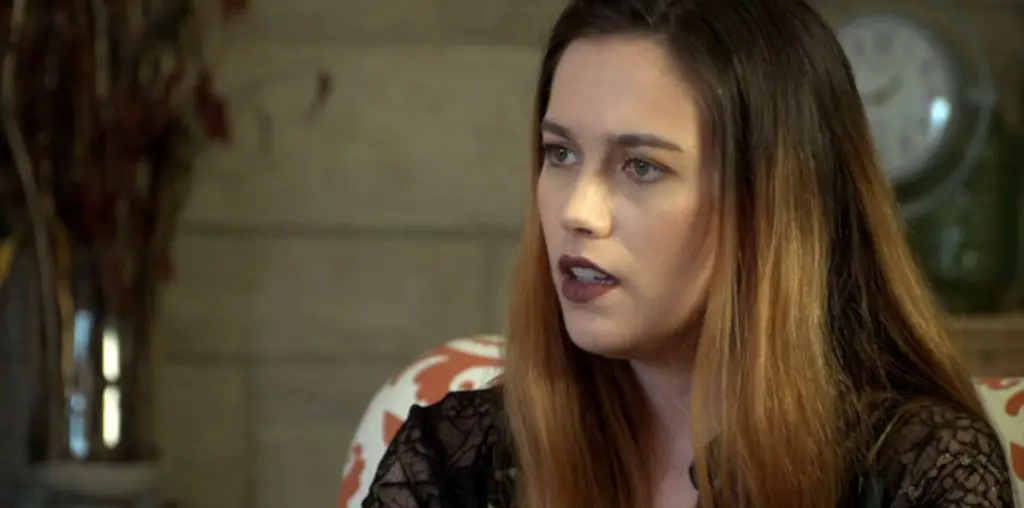
What good is sitting alone in your room? Come hear the music play! Life is a caaaaa-baaaaa-ret, old chum! Come to the…
Whoops! Sorry, we’re in the right story but the wrong movie. This week’s column is not about “Cabaret,” but its non-musical forerunner: the 1955 British production “I am a Camera.”
“I am a Camera” is basically “Cabaret” without the cabaret, if that makes sense. Oddly enough, “Cabaret” is a musical drama whereas “I am a Camera” is a non-musical comedy. Both were originally produced on Broadway before becoming films, and both were inspired by Christopher Isherwood’s autobiographical “Berlin Stories,” which was neither musical nor comical. Are you confused yet?
Even more confusing is the casting. For the role of Sally Bowles in “I am a Camera,” Julie Harris recreated her Tony Award-winning Broadway performance as the free-spirited yet vulnerable young woman adrift in Berlin of 1931. Sally is supposed to be British, but Harris never bothers to affect a British accent. She does, however, over-punctuate her speech with the word “rather,” which supposedly is what British people use.
The main problem, however, is how Harris conducts herself. Director Henry Cornelius (creator of the classics “Passage to Pimlico” and “Genevieve”) didn’t bother to realign Harris’ theatrical triumph for the cinematic medium. Instead, he allowed her to overact in a broad, hammy manner — as if she’s still playing for the balcony instead of the camera. And sadly, the camera magnifies the overdone performance to the point that her celebrated creation feels like a caricature instead of a character.
But at least Harris is putting life into her performance. As the young Isherwood struggling to support himself as a writer in pre-Nazi Berlin, Laurence Harvey was cast. This was not the best idea, since the tone of “I am a Camera” was frothy comedy and that was never Harvey’s specialty. He may have been aware of this, as he underplays the role considerably, almost to the point of passivity opposite Harris’ dynamo.
Yet for historic value, it is interesting to see how “I am a Camera” skirts around the touchier aspects of the Isherwood source material. Isherwood was openly and unapologetically gay, yet no production in 1955 would have a homosexual as a central character. But rather than bend the material into something Isherwood never imagined, “I am a Camera” drops carefully coded hints of the writer’s sexuality. When asked about finding the right woman, Harvey’s Isherwood happily announces: “I’m not the marrying type.” His platonic and sensitive relationship with Sally drops more clues. He’d sooner give her his bed and retreat to sleep on a couch than take advantage of her bohemian side and get under the covers with her.
Sally’s bohemian side results in a late plot development about her pregnancy. Isherwood’s story (and the later “Cabaret”) had Sally getting an abortion. In 1955, that was not allowed on the screen. Thus, Harris’ Sally has a false alarm pregnancy scare. Of course, that decided switch dramatically alters the point of her character and the story.
To its credit, “I am a Camera” was among the first post-war films to openly address the atmosphere of anti-Semitism which gave rise to the Nazi machine. A subplot involves a friend of Isherwood (a would-be gigolo) who attempts to seduce the Jewish daughter of a department store owner. That object of affection was played by Shelley Winters, which is curious in itself since the role is relatively small and Winters was a major star at the time. But in retrospect, it made commercial sense: neither Harris nor Harvey had much box office appeal and having a name performer would help in selling the film.
However, that strategy didn’t quite work. Despite the prestige pedigree, “I am a Camera” did not get a wide American release. In fact, it was picked up for commercial presentation by a small company called Distributors Corporation of America, which normally specialized in dumping cheapie exploitation flicks in theaters (that company’s best known title was Ed Wood’s notorious “Plan 9 from Outer Space”).
Time was never kind to “I am a Camera.” Once the wildly inventive and daring Bob Fosse film version of “Cabaret” opened in 1972, “I am a Camera” was always viewed as an inferior work. As years passed, it vanished from sight. The film surfaced in 1991 when a small label called Monterey Home Video presented it, but that edition has been out of print for a long time.
It is hard to say why “I am a Camera” is not more prevalent. Most likely there are problems with the rights to the Isherwood text or the Broadway play on which the film is based. This is too bad, because while “I am a Camera” is not that great of a film it is still an intriguing curio which deserves to have its value sung.
And speaking of singing: Life is a caaaaa-baaaaa-ret, old chum! Come to the caaaaa-baaaaa-ret. Hell, I feel like taking Liza out for a drink.
____________________________________________________________
IMPORTANT NOTICE: The unauthorized duplication and distribution of copyright-protected material is not widely appreciated by the entertainment industry, and on occasion law enforcement personnel help boost their arrest quotas by collaring cheery cinephiles engaged in such activities. So if you are going to copy and sell bootleg videos, a word to the wise: don’t get caught. The purchase and ownership of bootleg videos, however, is perfectly legal and we think that’s just peachy! This column was brought to you by Phil Hall, a contributing editor at Film Threat and the man who knows where to get the good stuff…on video, that is.
Discuss The Bootleg Files in Back Talk>>>
